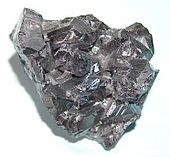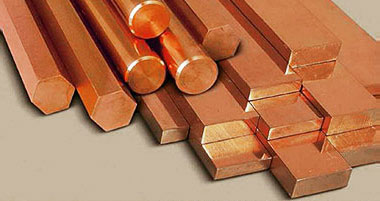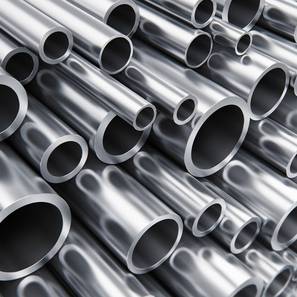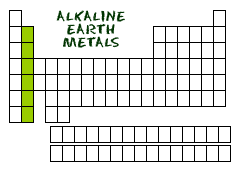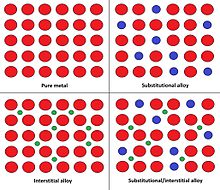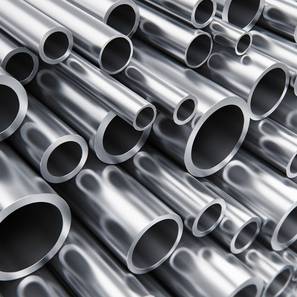What Do You Know About Metals?

Metals is a popular word in the world of science. Metals have been used for many things, many researches have been done on it. How well do you know metal? Why not take this quiz to know much about metal.
- 1.
The following are properties of metals except
- A.
Hard
- B.
Soft
- C.
Malleable
- D.
Opaque
Correct Answer
B. SoftExplanation
Metals are known for their hardness, malleability, and opacity. However, they are not typically soft. Metals have strong atomic bonds that give them their characteristic hardness and strength. Soft materials, on the other hand, can be easily deformed or scratched. Therefore, softness is not a property of metals.Rate this question:
-
- 2.
The oxides of metal is known as ____________
- A.
Acidic
- B.
Basic
- C.
Neutral
- D.
Salt
Correct Answer
B. BasicExplanation
The oxides of metal are known as basic because they have a tendency to react with water to form hydroxides, which are alkaline in nature. These oxides typically have a high pH and can neutralize acids. Examples of basic oxides include magnesium oxide (MgO) and calcium oxide (CaO).Rate this question:
-
- 3.
Which of the following is a metal?
- A.
Carbon
- B.
Pottasium
- C.
Nitrogen
- D.
Hydrogen
Correct Answer
B. PottasiumExplanation
Potassium is a metal because it is a solid at room temperature, it has a shiny appearance, and it is a good conductor of heat and electricity. Additionally, it is malleable and ductile, meaning it can be easily shaped and drawn into wires. Potassium also has a high melting and boiling point, characteristics commonly associated with metals.Rate this question:
-
- 4.
Which of the following is a transition metal?
- A.
Helium
- B.
Zinc
- C.
Nitrogen
- D.
Carbon
Correct Answer
B. ZincExplanation
Zinc is a transition metal because it belongs to the d-block of the periodic table. Transition metals are characterized by the presence of partially filled d orbitals in their electron configuration. Zinc has an atomic number of 30, and its electron configuration is [Ar] 3d10 4s2, with two electrons in the 4s orbital and ten electrons in the 3d orbitals. This configuration fulfills the criteria for a transition metal, making zinc the correct answer.Rate this question:
-
- 5.
Metals generally have ________ electrical conductivity.
- A.
None
- B.
Low
- C.
High
- D.
None of the above
Correct Answer
C. HighExplanation
Metals generally have high electrical conductivity due to the presence of free electrons that can move easily through the metal's crystalline structure. These free electrons create a pathway for the flow of electric current, allowing metals to conduct electricity efficiently. This property makes metals ideal for use in electrical wiring, circuitry, and other applications where the transmission of electricity is required.Rate this question:
-
- 6.
Metals generally have ___________thermal conductivity
- A.
High
- B.
Low
- C.
Minute
- D.
None of the above
Correct Answer
A. HighExplanation
Metals generally have high thermal conductivity because of the way their atoms are arranged in a lattice structure. The delocalized electrons in metals can easily transfer heat energy through the lattice, allowing metals to conduct heat efficiently. This property makes metals suitable for applications where heat needs to be transferred or dissipated, such as in cooking utensils, electrical wiring, and heat sinks.Rate this question:
-
- 7.
Which the following group elements is said to be highly reactive?
- A.
I
- B.
II
- C.
III
- D.
IV
Correct Answer
A. IExplanation
Group I elements, also known as alkali metals, are highly reactive. This is because they have only one valence electron, which they easily lose to achieve a stable electron configuration. This results in the formation of positively charged ions, making them highly reactive with other elements.Rate this question:
-
- 8.
Alkali and alkali earth metal are usually referred to as _________ metals
- A.
Light
- B.
Heavy
- C.
Moderate
- D.
None of the above
Correct Answer
A. LightExplanation
Alkali and alkali earth metals are usually referred to as "light" metals because they have low atomic masses and low densities. These metals are highly reactive and have low melting and boiling points. They are also known for their softness and ability to easily lose electrons, making them good conductors of electricity.Rate this question:
-
- 9.
Which of the following is defined as a mixture of two or more elements in which the main component is a metal?
- A.
Chemical
- B.
Alloy
- C.
Tools
- D.
None of the above
Correct Answer
B. AlloyExplanation
An alloy is defined as a mixture of two or more elements in which the main component is a metal. It is a homogeneous mixture that exhibits metallic properties. Alloys are commonly formed by combining different metals or by adding non-metallic elements to a metal. The purpose of creating alloys is to enhance the properties of the metal, such as strength, durability, and resistance to corrosion. Examples of alloys include bronze (copper and tin), steel (iron and carbon), and brass (copper and zinc).Rate this question:
-
- 10.
Metals in group ____ are highly reactive
- A.
III
- B.
II
- C.
I
- D.
IV
Correct Answer
C. IExplanation
Metals in Group I are highly reactive because they have only one valence electron in their outermost energy level. This makes them more likely to lose that electron and form positive ions, resulting in their reactivity.Rate this question:
-
Quiz Review Timeline +
Our quizzes are rigorously reviewed, monitored and continuously updated by our expert board to maintain accuracy, relevance, and timeliness.
-
Current Version
-
Mar 20, 2023Quiz Edited by
ProProfs Editorial Team -
Nov 03, 2017Quiz Created by
Jaksiboy






